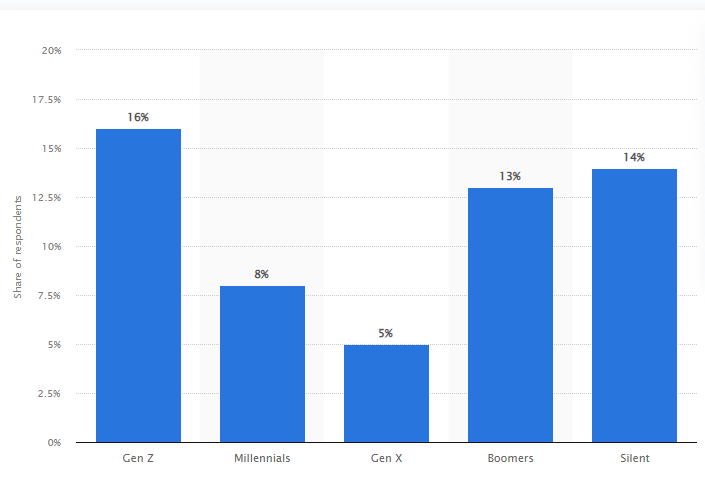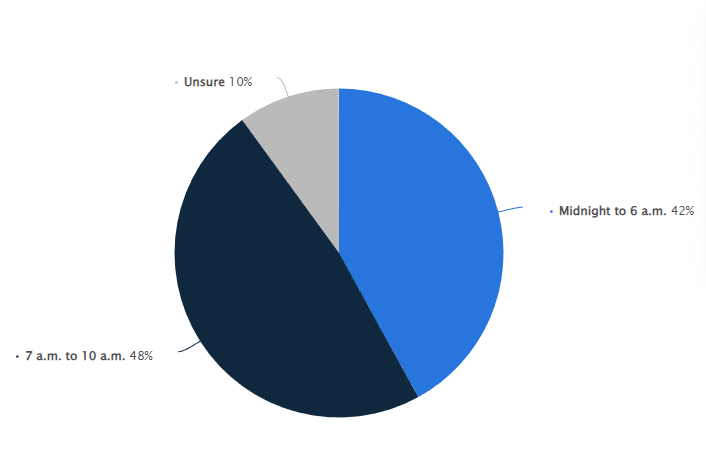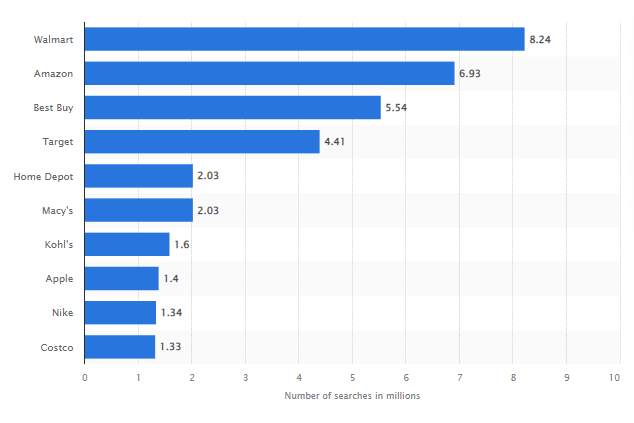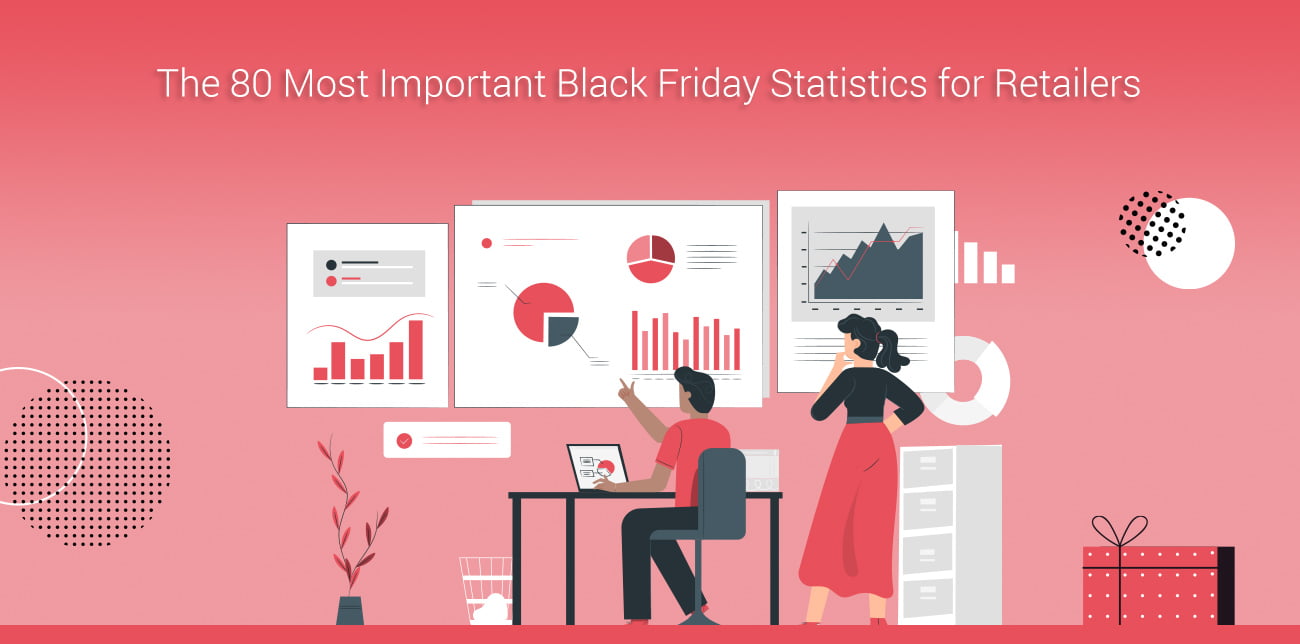Although Thanksgiving in November is unique to the United States, the Black Friday shopping frenzy has caught on worldwide, especially with the rise in online shopping. Once a one-day-only event, Black Friday has changed into season-long promotions and deals designed to draw in customers. Retailers have often relied on this shopping surge, and the term “Black Friday” refers to their ability to recoup year-long losses in the weeks leading up to Christmas. Therefore, we have gathered everything you need to take into account and be ready for another year of shopping craze.
Table of Contents
- > Black Friday 2023 in recap
- > Hottest Black Friday Trends for Black Friday
- > Black Friday vs. Cyber Monday Statistics
- > Important Black Friday retail statistics per country
- > Black Friday eCommerce statistics
- > Black Friday in-store statistics
- > Other important Black Friday statistics to consider
- > Black Friday statistics of 10 retail giants
- > Build a data-driven Black Friday strategy
Top Black Friday statistics for 2024
- Revenue projections indicate that Black Friday sales are expected to hit around $11 billion, representing a 12.3% increase compared to the $9.8 billion in 2023. (Black Friday Statistics)
- In-store shopping is anticipated to draw about 81.6 million people, showing a 7.08% rise in foot traffic from last year. (Bloggers Passion)
- Online shoppers are estimated to reach 91.6 million, reflecting a 1.5% increase over 2023. (Bloggers Passion)
- 75% of participants plan to shop online this Black Friday. (Drive Research)
- A notable 36% of shoppers think that stores should start selling Christmas decorations immediately after Halloween. (Drive Research)
- 34% of people intend to start their shopping on Thanksgiving Day. (Drive Research)
- 20% of individuals plan to spend $1,000 or more on holiday shopping this year. (Drive Research)
- 37% of Black Friday shoppers leave the line if they have to wait for more than 30 minutes. (Drive Research)
- 81% of in-person shoppers will be buying clothing and accessories on Black Friday and Cyber Monday. (Drive Research)
Black Friday 2023 in recap
Here’s an overview of 2023’s trends and patterns:
- Global online sales for Black Friday 2023 reached $70.9 billion.
- During the holiday season, online retail sales experienced a 6.3% increase.
- In-store shoppers on Black Friday 2023 totaled 76.2 million.
- The number of online shoppers during Black Friday 2023 was 90.6 million.
- The average discount for online purchases on Black Friday was approximately 31%.
Black Friday 2024 statistics per retailer
Target: Target underperformed during Black Friday, missing quarterly expectations with a profit margin of 3.9%, lower than its 5.35% estimates. The retailer attributed a major portion of the low revenue to retail thieves.
Lululemon: This retailer emerged as one of the biggest winners during Black Friday, achieving strong traffic results despite similar or lower year-over-year discounting levels or discounting activity below total sector averages, indicating that their assortments likely resonated with consumers.
American Eagle Outfitters: Like Lululemon, American Eagle Outfitters saw strong traffic and was named one of the biggest winners of Black Friday 2023, suggesting a positive consumer response to its offerings.
Victoria’s Secret: Victoria’s Secret was also among the winning retailers during Black Friday. Strong traffic results despite the discounting trends indicate positive consumer engagement.
Best Buy: Best Buy faced increased promotional intensity during Black Friday, which led to a Sell rating reiteration by analysts, indicating a less favorable performance. The increased promotions were seen as a response to consumers being more targeted with their store visits as opposed to casual browsing, likely prioritizing online shopping for bargain hunting.
Hottest Black Friday trends for 2024
Here are the top 10 trends predicted for Black Friday 2024 in the ecommerce sector:
- Elevated Average Order Value (AOV): Expectations point to a rise in AOV, suggesting consumers will be spending more for each transaction.
- Growth in Mobile Transactions: A surge in sales through mobile devices is anticipated, signaling a change in how consumers shop.
- Social Media Marketing: Brands are set to amplify their Black Friday promotions on social media platforms more than any prior year.
- Expansion of Buy Now, Pay Later (BNPL): Considering the current economic challenges, BNPL options have emerged as popular choices for consumers to procure their desired items without immediate financial strain.
- Preliminary Access Initiatives: Retailers are gearing up to introduce more “pre-sale,” “preview,” or “early access” promotions, aiming to heighten enthusiasm and offer a premium feel to their subscribers.
- Diverse Payment Options Preferred: Retailers offering a broader array of payment options are likely to be more favored by consumers.
- Younger Buyers Leading BFCM Purchases: Black Friday Cyber Monday (BFCM) sales are projected to be driven primarily by a younger demographic.
- Continued Focus on Omnichannel: The relevance of omnichannel approaches in retail is anticipated to remain robust.
- Rise of Hybrid Shopping: Merging online and physical store shopping experiences, known as hybrid shopping, is seeing increased adoption.
- Engagement via Livestream and TikTok: Retail entities are looking to platforms such as livestreaming and TikTok to bolster their holiday sales.
Black Friday vs. Cyber Monday Statistics

Cyber Monday has grown to be equally popular with the surge of online retail. Retailers lure customers onto their e-commerce sites with timed deals and steep discounts on the Monday immediately following Black Friday. As it seems, Cyber Monday is rapidly starting to eclipse Black Friday in sales, as outlined in the following statistics.
- In 2020, Cyber Monday has been gaining steam for a while, and sales surpassed those of Black Friday in 2019. Total Cyber Monday sales in the United States were $9.4 billion, while Black Friday sales totaled $7.4 billion. (Business Insider)
- Sales on Cyber Monday in 2021 totaled $10.7 billion, down 1.4% from 2020. Online sales on Black Friday were also down 1.3% from the previous record of $9.03 billion. (TechCrunch)
- Even those who were interested in in-store deals still took the time to look online. Nearly two-thirds (68%) of shoppers went online before looking in store for an item. (Consumer Decisions)
- The average order value peaked at $164 on Cyber Monday. (Big Commerce)
- Cyber Monday sales in Australia rose 223% in 2020 over 2019, and the average customer spent $286. (Cyber Monday Global)
- On average, Canadians conduct 1 of 5 online shopping transactions during the weekend of Black Friday, and they spend $365. Popular Black Friday weekend retailers in Canada include The Source and Staples. (Cyber Monday Global)
- One perceived motivator that drives Cyber Monday sales is the fear of missing out, boosting sales in the waning hours of the day. (Adobe)
- 2020 Cyber Monday sales fell short of projections by about 10%. (Radial)
- Amazon Marketplace sales were up 60% over the previous year. (CNBC)
- Items discounted by the highest percentage were electronics. (Adobe)
Tip: Check also all the Cyber Monday statistics a retailer shouldn’t miss.
Important Black Friday retail statistics per country
Thanksgiving may primarily be a North American holiday, but the end of November often signals the beginning of the shopping season on a global scale, with retailers noticing an uptick in revenue all over the world. Following, these notable Black Friday facts and statistics will aid you in getting a better grasp of this day’s universal impact.
Black Friday statistics – United Kingdom

- Black Friday has not caught on as quickly in the UK as it has throughout the world, but it generates more sales throughout the weekend than in other European countries. In 2019, Black Friday and Cyber Monday generated 8.566 million pounds in the UK. (Statista)
- COVID-19 impacted Black Friday sales in the UK, as retail sales dropped by over 10% compared to the previous year. (The Guardian)
- Popular Black Friday items in the UK include iPhones, Panasonic TVs, and gaming systems. (Much Needed)
- The average Black Friday discount offered in the UK is 62%. (Black Friday Sale)
- In 2019, online UK retailers received 194 million visits. (BlackFriday)
- In the UK, Black Friday deals may start as early as October but peak in November. (eCommerce United)
Black Friday statistics – United States

- In 2019, 93.2 million Americans shopped online on Black Friday. (SpendMeNot)
- The main reason Americans cite for shopping on Black Friday is free shipping, indicated by 49% of survey respondents in a study conducted by the National Retail Federation. (National Retail Federation)
- In the United States, 34% of Millennials indicated that they plan to spend more this year than in 2020. (GWI)
- In 2019, Smartphones accounted for 36% of online revenue and, in November and December, 58% of retail site traffic. (Adobe Holiday Shopping Report, 2019)
- In 2019, 84.2 million people in the United States shopped in-store during Black Friday sales. (National Retail Federation)
- Over 3/4 of Americans (77%) were more interested in supporting small businesses over Black Friday weekend in 2020 than they were before the pandemic. (National Retail Federation)
Black Friday statistics – Rest of Europe
- In Germany, shoppers expect Black Friday and Cyber Monday discounts of more than 10%. Steep markdowns attract the German customer. (Statista)
- In 2019, Spanish retailers saw 444% growth in sales on Black Friday versus during the first four weeks of October. (Criteo)
- French retailers saw a 201% increase in sales on Cyber Monday compared with sales during the first four weeks of October. (Criteo)
- Over half (53%) of Spaniards want to shop for fashion on Black Friday in 2021, followed by shoes and accessories at 39%. (Statista)
- The average Black Friday expenditure in France has declined since 2017, reaching a low of 97 euros in 2020. (Statista)
- German consumers largely shop for electronics during Black Friday weekend, with top searches ranging from Nintendo Switch to iPad. (eCommerce Germany)
Black Friday statistics – Australia

- In Australia, Black Friday has grown significantly in both awareness and popularity in the past five years. In 2017, 24% of Australians were unaware of this shopping day, while only 4% were unaware in 2020. (McCrindle Research)
- Of those who were aware, about 1/3 were not planning on participating in Black Friday sales. (McCrindle Research)
- Online sales made up 11% of the increase in Australian sales in November. (News.com)
- Australian Black Friday sales skyrocketed by 80%, making it the country with the 4th highest retail sales over that weekend. (MarketingMag)
- The average Black Friday markdown in Australia is 53%. (Black Friday Global)
- It is estimated that Australians spend approximately $170 on Black Friday deals. (Black Friday Global)
Black Friday statistics – Asia
- Amazon teamed with Chinese tech brand Baidu to offer more than 20 million products to Chinese consumers during the week of Black Friday in 2020. (KrAsia)
- In other Asian countries, people shopped the most at the end of the Sunday following Black Friday and on Cyber Monday. (Rakuten)
- In 2018, retailers in India experienced an increase in sales of 828% over other shopping days. (Black Friday Global)
- India’s Black Friday sales peaked from 6 PM until midnight. (Black Friday Global)
- In 2018, the average Black Friday transaction in Singapore contained four items. (Black Friday Global)
- Shopify sales in Japan grew by 347% in 2020. (Business Wire)
Black Friday statistics – Africa
- In 2019, 67% of South African Black Friday shoppers only shopped in a physical store. (Geo Poll)
- Although Black Friday can be hit or miss in South Africa, 70% of people indicated that they would participate if the sales were good enough. (Finder)
- In 2019, Nigerian retailer Jumia had more than 3 million Black Friday orders and over 100 million site visits through its app. (TechNext)
- Of Nigerian shoppers who participated in Black Friday in 2019, 60% shopped on Black Friday as opposed to other days on the weekend. (Picodi)
- Kenyans had the opportunity to buy discounted produce, food, clothing, and medicine, besides electronics in 2019. (Xinhuanet)
Black Friday eCommerce statistics

There are many reasons people might be more inclined to shop online. For one, traditional Black Friday deals have often required shoppers to line up early before the good items are gone. Black Friday sales have also sparked violence in some stores. Whatever the reason, shoppers are shifting from in-person to online shopping throughout Black Friday weekend.
- Over half (59%) of online sales in 2019 were made on desktop computers, followed by over a third on smartphones (37%). (eCommerce Guide)
- In the United States, 36% of people plan on spending more than they did last year throughout the holiday season. (SiteCore)
- From Thanksgiving to Cyber Monday in 2019, the average order value rose from an average of $152.95 during the rest of the holiday season to $162.03. (Statista)
- In 2020, 100 million customers shopped online throughout Black Friday weekend. (BlackFriday.com)
- In the United States, the top-selling products consisted of electronics, toys, and appliances. The average consumer spent $27.50 per person. (Adobe)
Black Friday in-store statistics
Because the massive shift to online shopping in 2020 was due in large part to the COVID-19 pandemic, it remains to be seen whether shoppers will stick with digital shopping in 2021 or if they will opt for in-store purchases. Labor shortages are predicted to impact delivery times this year, so customers might choose to shop in-store to make sure they have their gifts on time. Other in-store statistics to be aware of include the following.
- In 2019, 124 million people shopped in stores, while 142.2 million shopped online, showing that the shift to digital was already in progress. (National Retail Federation)
- Slightly less than half (46%) of people enjoy Black Friday shopping in stores with their friends as a holiday tradition. (Deloitte)
- Black Friday foot traffic was down 52% in 2020, primarily because people were concerned about health and safety. (Market Watch)
- More than 20% of shoppers spend 90% of their Black Friday budget on gifts, while others take advantage of deals for themselves. (Balancing Everything)
- In 2020, 46% of the customers preferred shopping in-store with family and friends as a Black Friday tradition. (Deloitte)
Other important Black Friday statistics to consider
- Women make up a slim majority of Black Friday shoppers at 50.4%. (SpendMeNot)
- Of all retail sales throughout the year, 30% are made during the holiday shopping season. (SpendMeNot)
- Black Friday-related violence is highest in southern states, but there have been incidents across the country. (Reviews.org)
- Of the stores that have reported Black Friday incidents, Walmart cited the highest amount at 57.1% of reported instances. (Reviews.org)
- In 2019, online retailers reported a 79.8% shopping cart abandonment rate. (Finances Online)
- Many Black Friday shoppers look for deals on their phones as 58% of traffic came to online retailers through mobile devices. (Finances Online)
- Only 36% of online Black Friday sales in 2019 were made on mobile devices. (Finances Online)
- Over half (56%) of shoppers start their holiday shopping at the beginning of November. (National Retail Federation)
Black Friday statistics of 10 retail giants

One of the most popular Black Friday retailers is Amazon, which accounted for over half (54.9%) of all Black Friday sales in 2020. These tidbits include other important statistics from a list of the top 10 retailers worldwide.
- In 2019, Amazon’s top-selling Black Friday items included a Star Wars Lego set and the Echo dot. (Huffington Post)
- Walmart’s 2020 Black Friday sales totaled $76 million. (Jungle Scout)
- Target’s November 2020 sales rose by 156% over the previous year, making it one of the most successful of that year. (Retail Dive)
- In 2020, Costco experienced a website outage during the crucial Black Friday period that impacted online sales by about 20%. (SuperMarket News)
- Home Depot and other major retailers decided to offer Black Friday sales over a two-month period in 2020 to make the shopping experience safer for customers. (Impact Plus)
- UK retailer John Lewis experienced a 43% uptick in sales through its mobile app on Black Friday 2019. (The Guardian)
- Sephora offers many of its in-store deals online with promo codes, and frequent buyers can receive extra discounts. (Black Friday Global)
- In 2015, UK retailer ASDA pulled the plug on Black Friday following a series of violent incidents the year before but has since reintroduced holiday shopping discounts. (The Sun)
- Tesco was another victim of technical issues related to increased online shopping demand. In 2019, its site crashed and led to a loss in sales. (IMRG)
- Over 150,000 shoppers went online to take advantage of Aldi’s Black Friday deals in 2020, crashing the site. (Manchester Evening News)
Discover more Black Friday resources
- Black Friday Checklist: A 50-Spot Last-Minute Audit for Retailers
- The 27 best Black Friday campaigns of all time
- How to Prepare for Black Friday: A Retailer’s Guide
- 10 Creative Black Friday Strategies for Retailers
Other insightful marketing statistics resources for retailers
- 75 Halloween statistics and facts every retailer should consider
- The 50 most important Mother’s Day statistics for retailers
- Retail Statistics: the 100 Most Insightful Stats You Shouldn’t Ignore
- Retail Customer Engagement Statistics: 55 Stats You Need to Know
- Marketing Automation Statistics for eCommerce
- 56 Christmas Marketing Statistics to Know for This Holiday Season
- Cyber Monday Statistics: 70 Stats Every Retail Executive Should Know
- 50 Father’s Day Statistics No Retailer Should Miss
Build a data-driven Black Friday strategy for 2024
The statistics showcased here highlight the importance of a Black Friday strategy, necessary to drive traffic to your website. Before launching your plan, make sure that your website is optimized for mobile users and up to the task of handling increased traffic. Once your eCommerce website is up and running, deploy an omnichannel marketing strategy to reach Black Friday and Cyber Monday shoppers through their preferred contact channels.
A data-driven approach lets you take action that is more likely to convert customers. You can use analytics from previous marketing campaigns to determine which ads to run on each platform. Look to existing Black Friday campaigns for inspiration on how to engage and excite your customers. Use your data to develop a strategy for running campaigns that reach your target customers in their preferred channels and make them more likely to buy on Black Friday weekend.
A well-rounded campaign that offers a smooth customer experience can help you capture and impress Black Friday customers and improve your chances of converting them into repeat buyers. If you’re ready to jump in on the Black Friday shopping rush, but you’re overwhelmed about where to start, contact us for a consultation. ContactPigeon’s experienced team has helped over 300 brands in the EU develop omnichannel customer engagement strategies that will help you better convert customers. Book a free 30-minute consultation call to start creating your data-driven Black Friday strategy now.

Let’s Help You Scale Up
Spending time on Linkedin? Follow us and get notified of our thought-leadership content:





